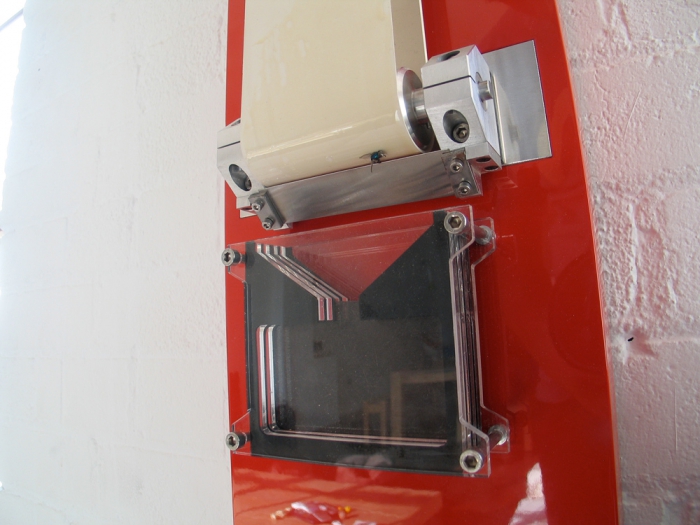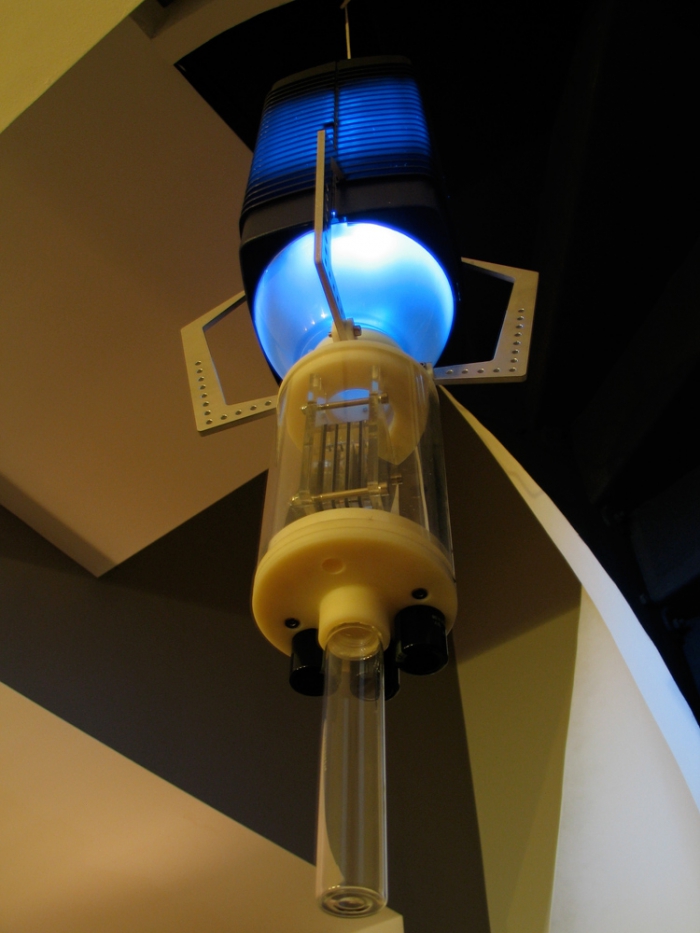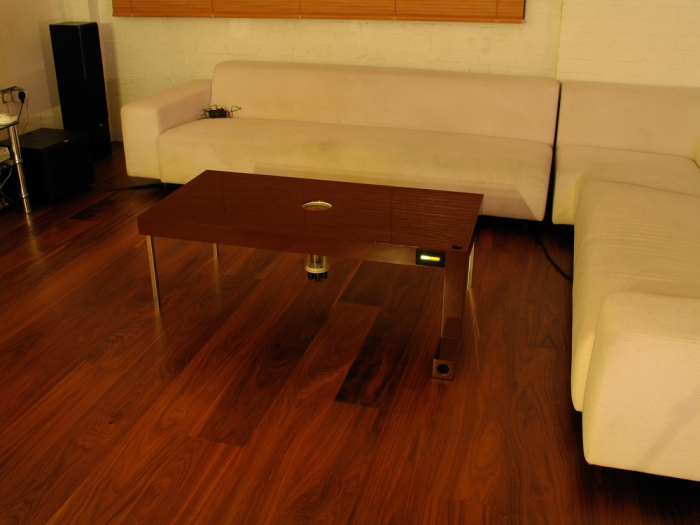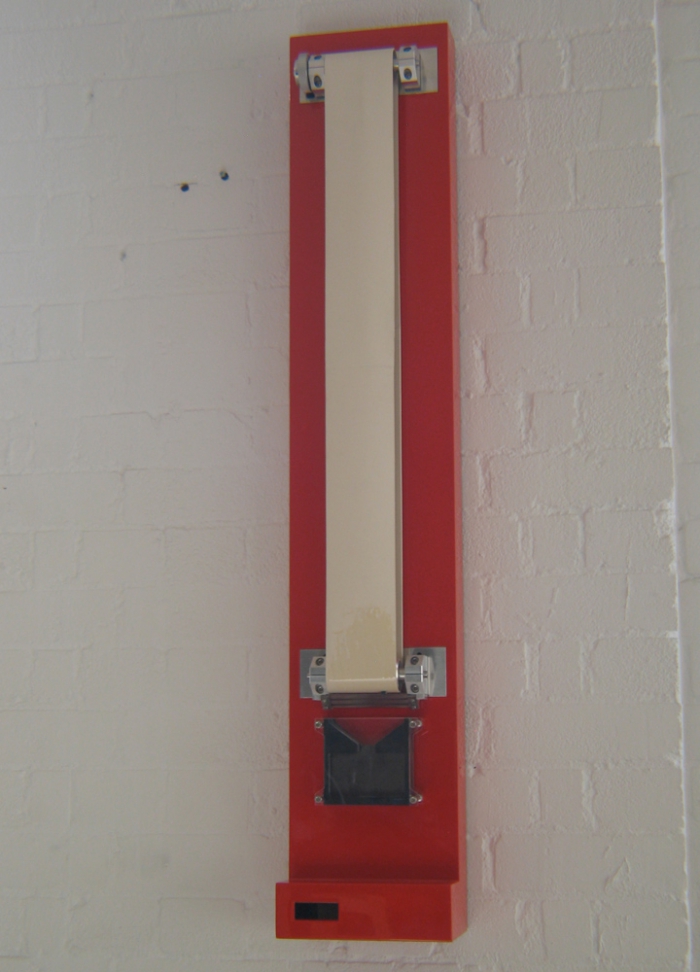Carnivorous Domestic Entertainment Robots
Carnivorous Domestic Entertainment Robots
With the Carnivorous Domestic Entertainment Robots James Auger, Jimmy Loizeau and Alex Zivanovic propose a new type of domestic robot that creates a new category of object that exists somewhere between a product and predatory pet. The artists contend that if robots are ever to be welcomed into people's homes, they'll need to fit in with the rest of the furniture, and earn their keep. Their prototypes trap and digest pests like flies and mice to gain energy. Traditional fly-catchers, using sticky-tape and UV light have no method to manage the waste produced by the carcass of the pest. The Carnivorous Domestic Entertainment Robots prototypes power themselves with special fuel cells that are able to produce electricity by processing the bodies of flies, and in one case, mice.
These unsettling apparati, including a sticky conveyor belt clock and moth-attracting death lamp are a bizarre hybrids between machine and living organism. They are an example of the emerging field of 'critical design' or 'speculative design', where designers create prototypes to stimulate debate, discussion, and in some cases controversy.
transmediale.10 are showing a series of Carnivorous Domestic Entertainment Robots at the House of World Cultures, including the Flypaper robotic clock, the Coffee table robot, and the Lampshade robot.




